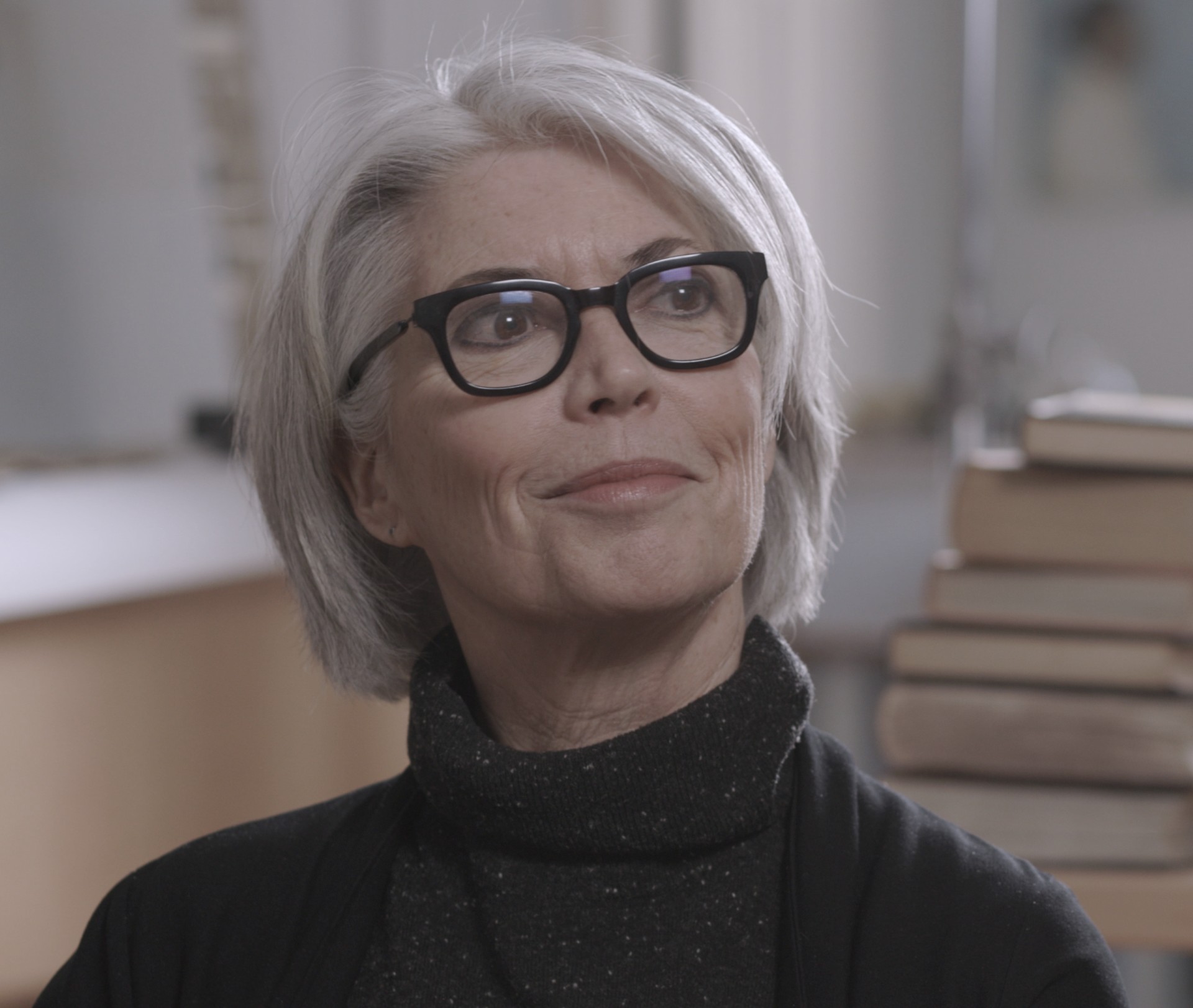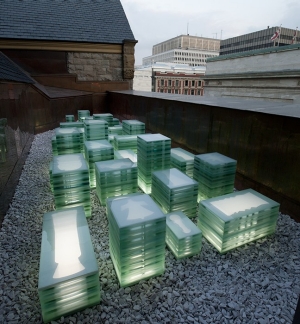Critical foundations
Blain says that while her educational journey started with drawing, she quickly evolved her practice to incorporate multiple mediums.
“Concordia made a big difference,” says Blain. “I’m convinced of that.”
She explains that much of her artistic growth and critical perspective can be attributed to the mentorship of two former professors, Bob Murray and Russell T. Gordon. She says Murray and Gordon’s personal experiences with racism profoundly impacted her critical outlook.
“You meet people in your life, and they’re not just your teachers, they’re who you’re going to exchange with in a way that brings you into worlds that you wouldn’t have known.”
Form and function
While Blain embraces the label of "political" artist, she also emphasizes the importance of form alongside subject matter in her work.
Artworks such as “Mirabilia-1” highlight technology as a tool rather than an end in itself. The installation, on permanent display at the Montreal Museum of Fine Arts, consists of 38 glass sculptures. Blain created each sculpture using a water jet, a tool that cuts glass with water.
“I worked with technology that could allow me to be very precise in the detail of what I was trying to draw in each cube,” she explains.
“Technology, for me is a tool, a pure tool.”
She adds that a minor in graphic design equipped her with adaptable skills, allowing her to realize conceptual ideas over time as technology advanced.
“Those techniques helped my practice. I had some concepts in the ’80s that I couldn’t realize before Photoshop, so I kept them until it was possible to produce them the way I imagined.”
Finding a balance
Nowadays, Blain works mainly with images she finds online. She says she hopes to reinvigorate digital images with a physicality, noting that our relationship to their subject matter typically lasts only as long as a click. For her, this means acknowledging the delicate balance required of addressing sensitive subjects in her work.
Reflecting on her accolades — including the 2014 Prix du Québec Paul-Émile-Borduas — Blain says she finds encouragement in the way awards can increase attention to sociopolitical issues.
“It’s like walking a tightrope,” she notes. “The subjects are sensitive. I treat them delicately, but they’re very sensitive subjects.”
Finally, she shares that she is grateful for the visibility awards like the Governor General’s provide for Canadian artists, and for the dialogue they provoke.
“Since it’s a Canadian prize, the artists come from all over the country. These meetings are always inspiring. It was as interesting to me to learn about the other winners as it was for me to receive my prize!”
With her work set to be exhibited at the National Gallery of Canada, Blain says she sees this recognition as an opportunity to advocate for arts education and creative expression. She says she believes that such accolades not only validate artists’ efforts but also alleviate the self-doubt that often accompanies artistic endeavours.
“At any level of education, to expose children and teenagers to art is absolutely essential. A prize like the one I was fortunate to receive, yes, it’s a recognition, but it’s also very encouraging.
“It calms the doubts that often artists have in their work.”
 Concordia alumna and Governor General award winner Dominique Blain | credit: Sarah Baril Gaudet
Concordia alumna and Governor General award winner Dominique Blain | credit: Sarah Baril Gaudet
 Blain’s Mirabilia-1, on permanent display at the Montreal Museum of Fine Arts, memorializes artworks lost to theft, looting, or destruction. | credit: Denis Farley
Blain’s Mirabilia-1, on permanent display at the Montreal Museum of Fine Arts, memorializes artworks lost to theft, looting, or destruction. | credit: Denis Farley